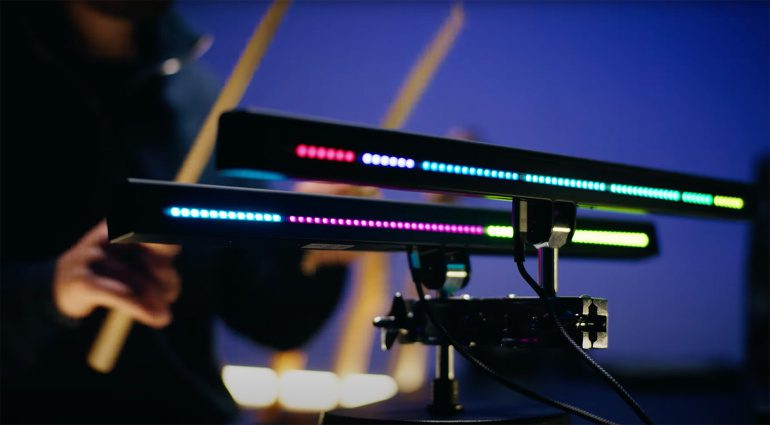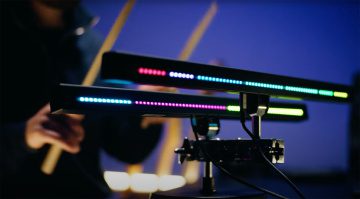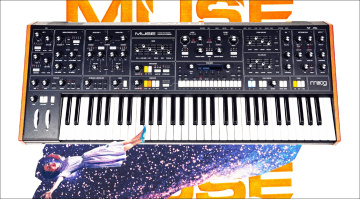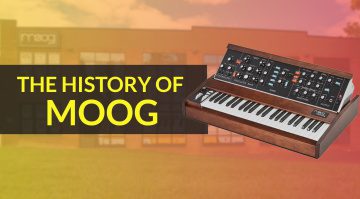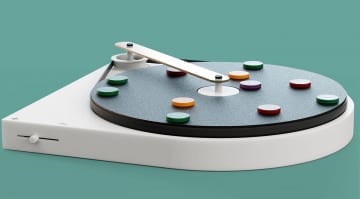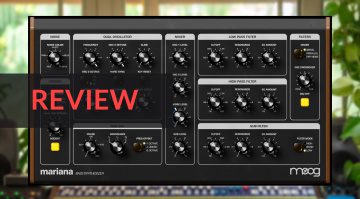Drumbeam, Biotron and the History of MIDI: Synth Journal
Drumbeam is an infinitely customizable drum controller that looks like a dream come true for electronic live sets. Also in this edition of Synth Journal: Make music with plants, revel in the glory of the Moog Muse, and travel back in time with a retro MIDI documentary from the BBC archives.
Synth Journal
afk-audio Drumbeam: Next-Level Drum Controller for Electronic Live Sets
Wait, we’re kicking off this week’s Synth Journal with something that isn’t a synth at all? That’s right! As the name suggests, Drumbeam is primarily for drummers – but it might just be what you need to take your electronic live set to the next level.
In a nutshell, Drumbeam is a multi-touch MIDI controller designed to be played with drumsticks. The horizontal bar attaches to a standard rod clamp for easy integration into any acoustic or electronic drum kit, but you can also mount it on a mic stand or anything else you see fit.
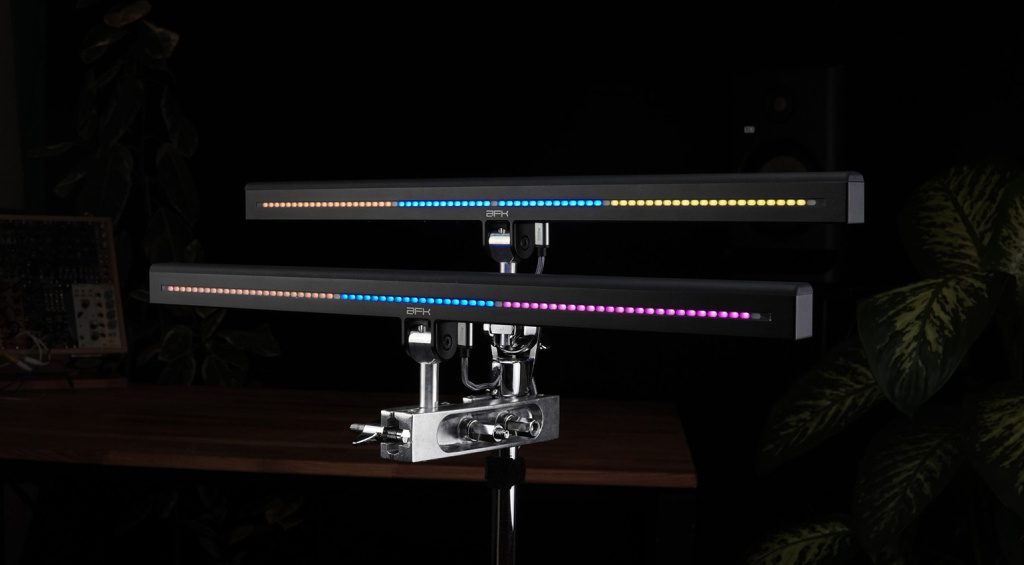
And now the fun begins: Using the customization app, you can define up to 18 playing zones on the bar (although that might be a bit tight). The size, location, and dynamic response of each zone are fully customizable. An LED light guide provides visual feedback and makes it easy to see where each zone is located. I think it was a brilliant idea to put LEDs on the audience side, as well, which makes for a cool visual effect during a performance. A fully customizable drum and percussion controller with a built-in light show!

Drumbeam can handle up to four simultaneous hits and also detects gestures such as squeezing and choking. In addition to USB-C for power and MIDI, there’s a pair of TRS jacks for MIDI in and out, so you can connect it directly to any hardware synth or sampler.
The Kickstarter campaign for Drumbeam was off to an amazing start this week and the financing goal was surpassed within just a few hours. The first round of early bird specials is all gone now, but at the time of writing, you can still order Drumbeam with a 25% Kickstarter discount for €375 (about $405). The manufacturer expects to ship the first units in March 2025.
Playtronica Biotron: Make Music with Plants
Here’s another not-so-common way to control your synths: use the force of nature! Biotron by Playtronica is a MIDI controller that transforms plants into sound. It works by measuring the plant’s natural electrical properties and converting them into MIDI messages. Maybe those potted plants in synth demo videos were there for a reason all along?
Simply attach a couple of electrodes (sold separately) to your plant, hook them up to Biotron using alligator clips, and then touch and move your plant. Playtronica says that environmental factors such as light and moisture also have an effect on the sound.
The plant-generated MIDI messages are configured via a web-based app. You can use Biotron to control any hardware or software synth that understands MIDI – or use one of the free online soft synths on synth.playtronica.com.
Biotron will be available soon from the Playtronica website for $98.99. You can sign up to get notified when it’s available.
Check out these Incredible Moog Muse Sounds
When my colleague Rob Puricelli reviewed the Moog Muse earlier this year, he began by asking the one question everyone had in mind: “Can Moog make a good polyphonic synth?” If his review wasn’t enough to convince you they can, this wonderful new video by VicKorfTron should leave no doubt about it:
I could listen to those sounds for hours. In fact, I really want a Muse now. And I agree with the commenters saying that he absolutely needs to release a sound pack! When he does, you’ll surely find it in Rob’s Sounds and Presets section.
Oh, by the way – what’s with the potted plant? 😜

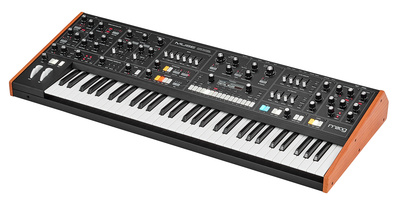
Discover the Magic of MIDI – but it’s 1990
Let’s travel back in time and marvel at the retro aesthetics of this little gem from the BBC archives. This clip has everything – the clothes, the hairstyles, the Atari. If anything, it needs more cowbell!
What’s amazing is that we all still use the same protocol to this day. You could easily plug any modern-day synth into that trusty Atari and it would just work. Can’t say that about my Firewire audio interface or SCSI hard drive … Standards come and go, but MIDI is here to stay, despite (or because of?) its limitations. What an amazing achievement and contribution to music by Dave Smith and Ikutaro Kakehashi!
*This post contains affiliate links and/or widgets. When you buy a product via our affiliate partner, we receive a small commission that helps support what we do. Don’t worry, you pay the same price. Thanks for your support!

 5,0 / 5,0 |
5,0 / 5,0 | 